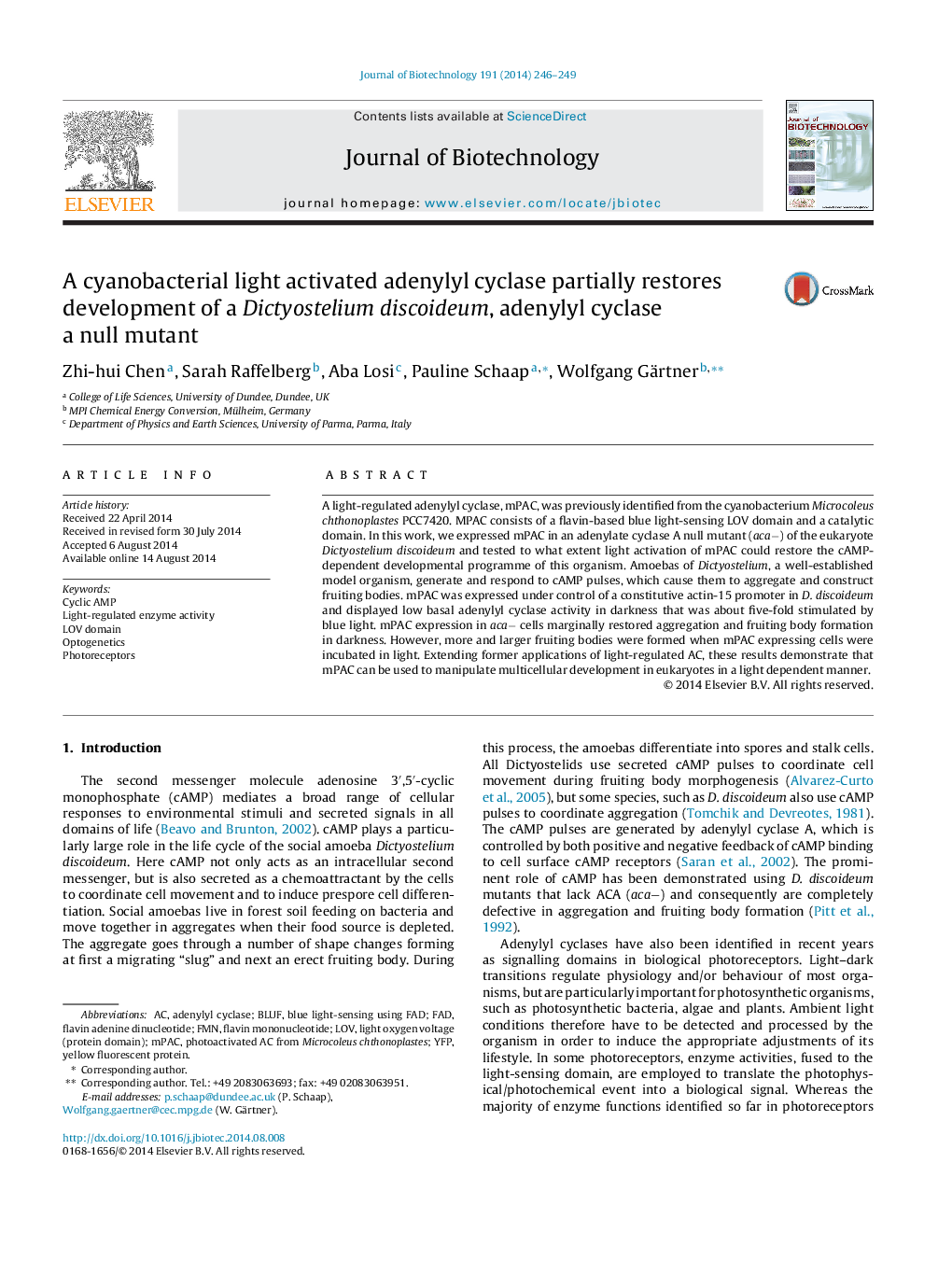| Article ID | Journal | Published Year | Pages | File Type |
|---|---|---|---|---|
| 23021 | Journal of Biotechnology | 2014 | 4 Pages |
•A light-regulated adenylyl cyclase (AC) induces differentiation in Dictyostelium discoideum.•This protein is the first light-regulated AC controlled by a LOV domain.•A D. discoideum mutant was used in which all three endogenous ACs had been deleted.•Irradiation of transformed D. discoideum mutants caused differentiation and fruiting body generation.
A light-regulated adenylyl cyclase, mPAC, was previously identified from the cyanobacterium Microcoleus chthonoplastes PCC7420. MPAC consists of a flavin-based blue light-sensing LOV domain and a catalytic domain. In this work, we expressed mPAC in an adenylate cyclase A null mutant (aca−) of the eukaryote Dictyostelium discoideum and tested to what extent light activation of mPAC could restore the cAMP-dependent developmental programme of this organism. Amoebas of Dictyostelium, a well-established model organism, generate and respond to cAMP pulses, which cause them to aggregate and construct fruiting bodies. mPAC was expressed under control of a constitutive actin-15 promoter in D. discoideum and displayed low basal adenylyl cyclase activity in darkness that was about five-fold stimulated by blue light. mPAC expression in aca− cells marginally restored aggregation and fruiting body formation in darkness. However, more and larger fruiting bodies were formed when mPAC expressing cells were incubated in light. Extending former applications of light-regulated AC, these results demonstrate that mPAC can be used to manipulate multicellular development in eukaryotes in a light dependent manner.
